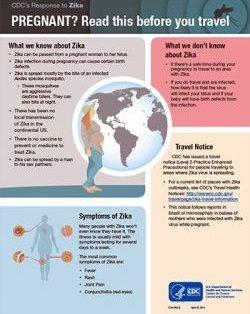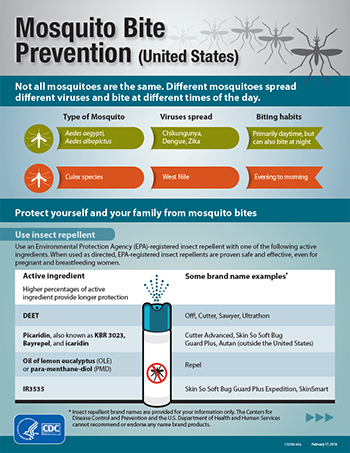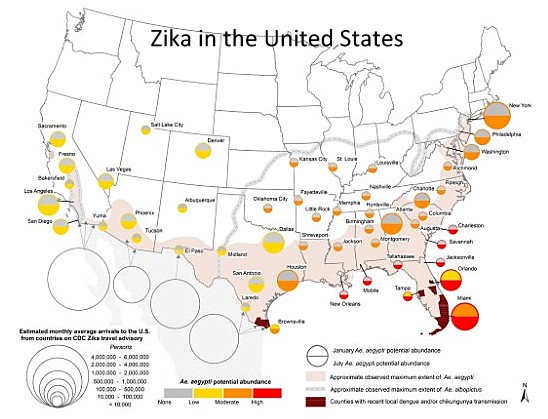What you need to know
Click here to read an updated 2016 flyer from the Medical Society of the State of New York about the Zika virus with lots of information and links for you.
About Zika Virus Disease
According to the Centers for Disease Control (CDC), Zika virus disease (Zika) is a disease caused by the Zika virus, which is spread to people primarily through the bite of an infected Aedes species mosquito. The most common symptoms of Zika are fever, rash, joint pain, and conjunctivitis (red eyes). The illness is usually mild with symptoms lasting for several days to a week after being bitten by an infected mosquito. People usually don’t get sick enough to go to the hospital, and they very rarely die of Zika. For this reason, many people might not realize they have been infected. However, Zika virus infection during pregnancy can cause a serious birth defect called microcephaly, as well as other severe fetal brain defects. Once a person has been infected, he or she is likely to be protected from future infections.
In May 2015, the Pan American Health Organization issued an alert regarding the first confirmed Zika virus infection in Brazil.
Specific areas where Zika is spreading are often difficult to determine and are likely to change over time. If traveling, please visit the CDC Travelers’ Health site for the most updated travel information. However, as you can see from the map below, since Zika is spread by mosquitos, it is much more likely to be caught in warm climates like those found in the South.
Information you can use
Click on any of the links below to find out more from the CDC about how Zika is spread and how you can protect yourself and your family:
- Click posters to open PDF files
- Prevention
- Transmission & Risks
- Symptoms, Diagnosis, & Treatment
- Areas with Zika
- Information for Specific Groups








